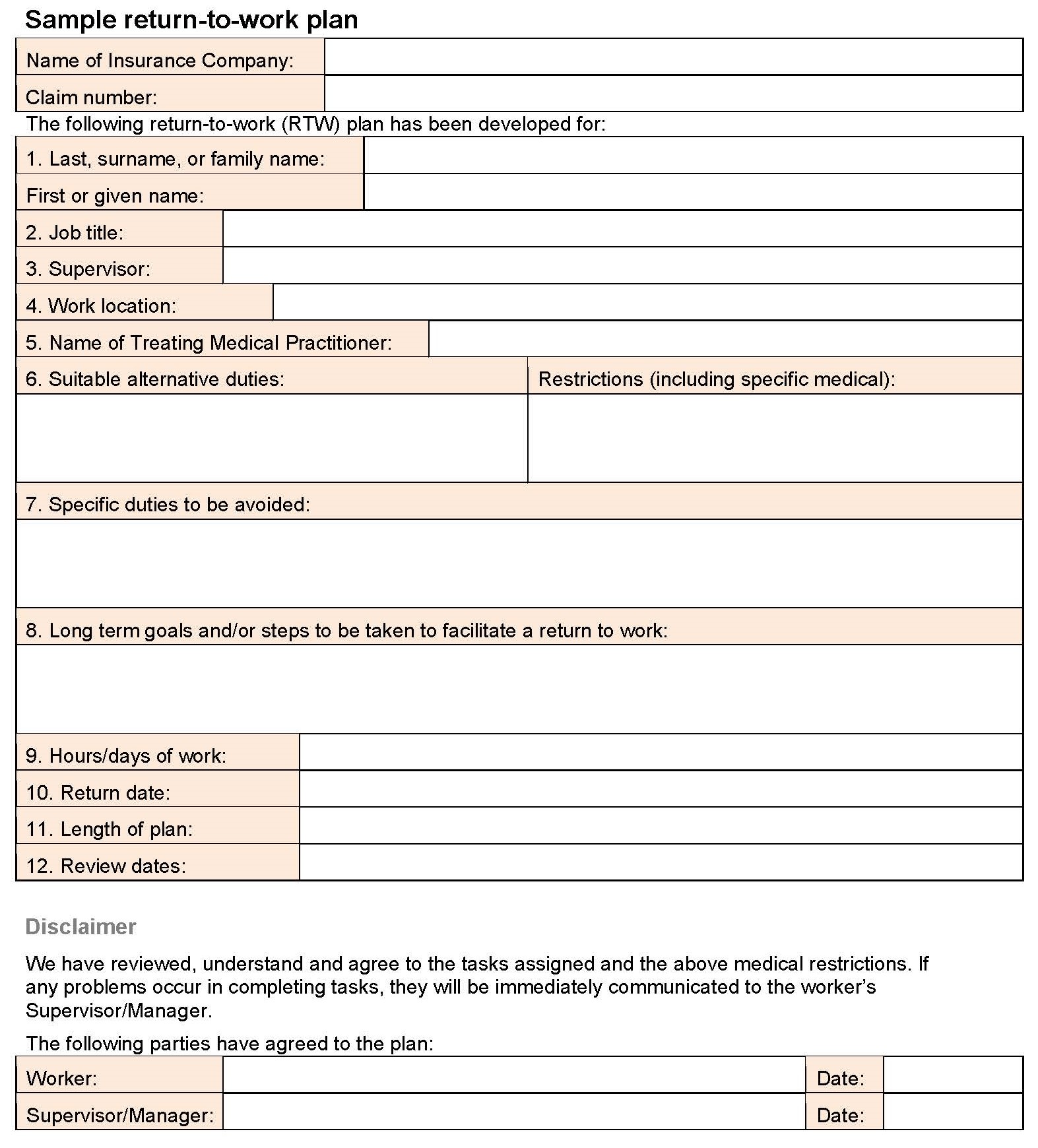Return to work plans (RTWP)
This information bulletin has been developed to assist employers in their understanding and development of a Return to Work Plan (RTWP).
Employers must give a proposal in writing for a RTWP to the worker within 7 days after the employer becomes aware that the worker’s total or partial incapacity is likely to exceed 28 days.
A RTWP is a tool for employers to proactively help injured workers safely return to work as soon as practicable:
NT WorkSafe is a signatory to the position statement, Realising the Health Benefits of Work, introduced by the Australasian Faculty of Occupational and Environmental Medicine (AFOEM). The paper highlights the longer someone is off work the less likely they are to return. Providing suitable duties will help the injured worker recover at work while reducing disruption to their personal and work life, and disruption to business.
An effective RTWP relies on the cooperative efforts of all participants – employers, workers, insurers, medical professionals, allied health professionals and vocational rehabilitation providers. The key principles underlying the safe and early return to work of injured workers include:
- A RTWP based on the principle that an employer can facilitate a coordinated return to work.
- The plan is delivered according to medical advice and where necessary the use of a vocational rehabilitation provider.
Rehabilitation aims to:
- maintain the injured worker within the workplace
- return the injured worker to appropriate employment in a timely, safe and cost efficient manner.
A RTWP as part of a rehabilitation program should:
- be developed in consultation with the injured worker and the treating medical practitioner (and vocational rehabilitation provider if appointed)
- be tailored, outcome-based and set out the steps to achieve return to work
- be available to an injured worker with a work capacity
- recognise the existing skills, experience and capabilities of the injured worker to allow suitable employment to be found
- if necessary, utilise retraining and referral of the worker to the alternative employer incentive scheme when it is not possible for the employee to return to pre-injury duties.
The plan should be tailored to the needs of the injured worker and an example of a RTWP template is provided at the end of this document.
There are six important steps involved in preparing an effective RTW plan:
1. Gathering information
A good starting point is to have a copy of your workers pre-injury job duties and a copy of the injured workers current medical certificate of capacity for work from the injured workers medical practitioner.
Compare the pre-injury duties physical requirements with any medical restrictions listed of the medical certificate of capacity and identify if there are pre-injury duties that can be achieved on a return to work plan.
If workers medical restrictions do not allow for any pre-injury duties to be performed, then consult with other work areas within your business to find suitable duties to allow for the injured worker to safely return to the workplace as soon as practicable.
RTWPs are unique to the individual injured worker and vary on the injured worker concerned and the nature of their injury. Studies have shown that staged RTWPs, developed with the input of the injured worker are most successful.
A RTWP should start when the injured worker has any capacity to work. A good RTW plan should clearly outline the different ‘stages’ the injured worker will go through until the injured worker is ready (and declared fit by their treating medical practitioner) to return to their full time pre-injury work, including hours.
2. Determine the return to work goal
The RTWP goal should be decided in consultation with the employer, the injured worker and the treating medical practitioner. In the majority of cases, the goal would be for the injured worker to safely return to their pre-injury job as soon as practicable.
Consultation with the injured worker and their treating medical practitioner will be required in determining the date expected to achieve the RTWP goal.
3. Document the plan
The RTWP should be considered a draft in the first instance and given to the injured worker and their treating medical practitioner to review. Any changes to the plan should be made if possible. Once the return plan is complete, it should be signed by the employer and the injured worker.
As the RTWP is reviewed and any changes made, the reviewed plan needs to be signed.
4. Implement the plan
A RTWP should start when the injured worker has any capacity to work as provided on the medical certificate of capacity.
5. Monitor the plan
Keep in touch with your worker and their supervisor. Set up weekly informal review meetings to ensure the plan is followed and any concerns are discussed. Be flexible to any changes that need to be made and update the RTWP to reflect the changes.
6. Review the plan
Generally the plan would be reviewed at intervals with the employer, worker and their treating medical practitioner. The review date may be proposed in conjunction with the updated medical certificate of capacity.

YouTube Link: https://www.youtube.com/watch?v=o1A3hM0K9eA
Contact us
For further information please contact us on 1800 250 713, via email at datantworksafe@nt.gov.au or go to the NT WorkSafe website at www.worksafe.nt.gov.au
Return to work plans (V2.1 – September 2021)
Document reviewed on 5/01/2023